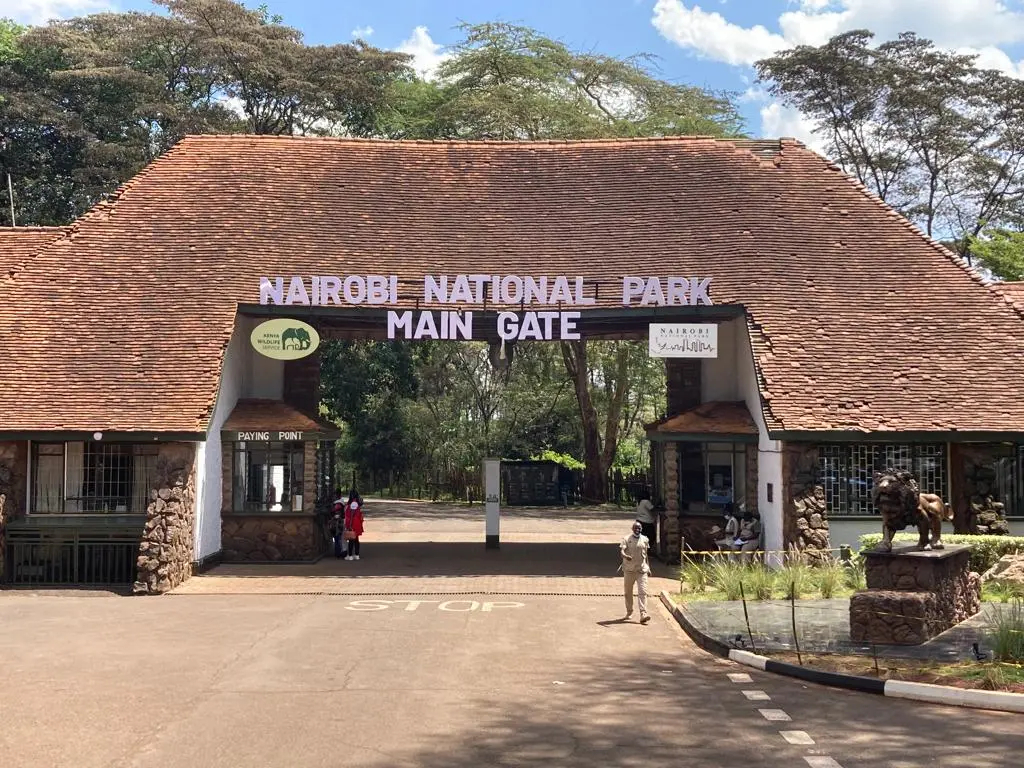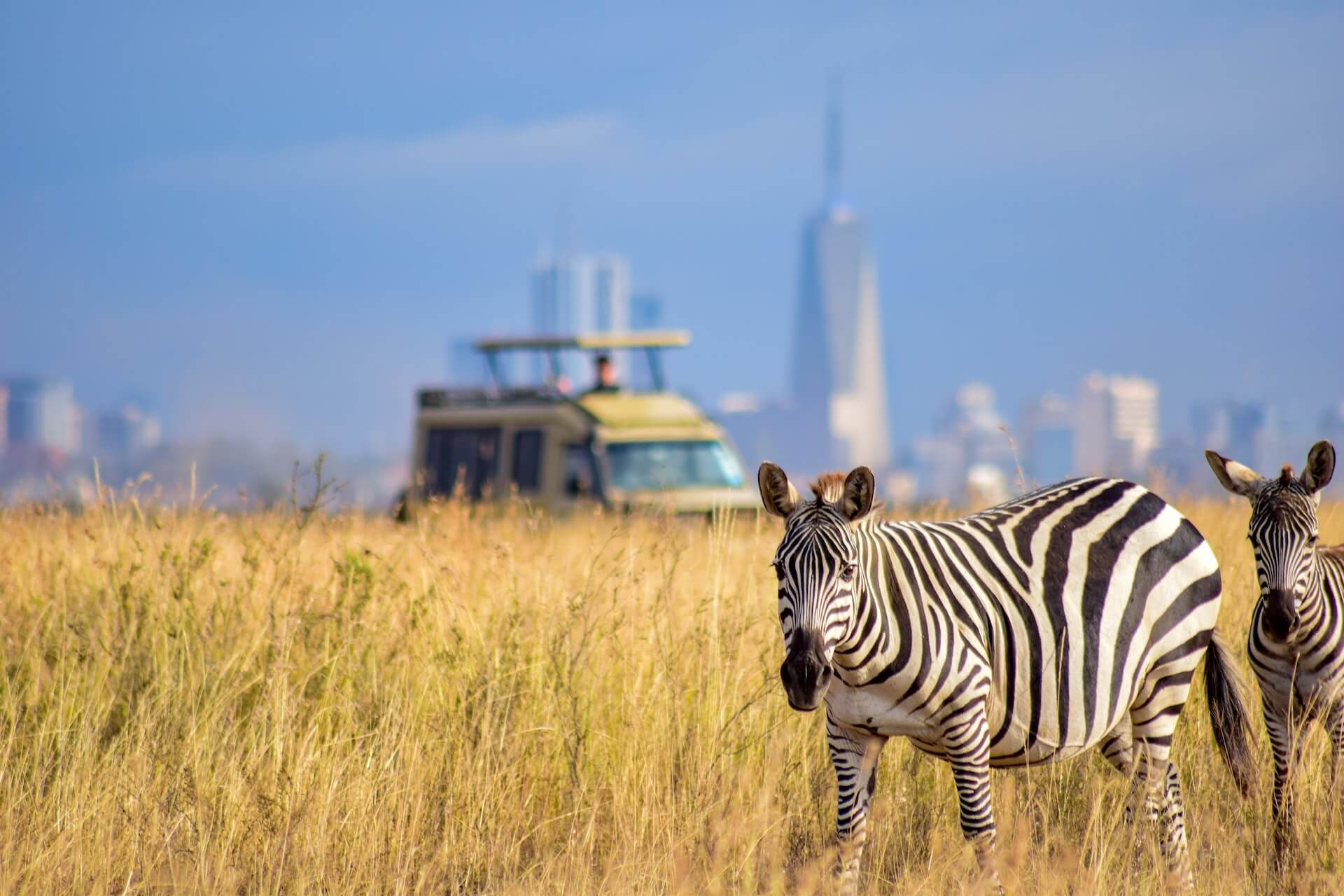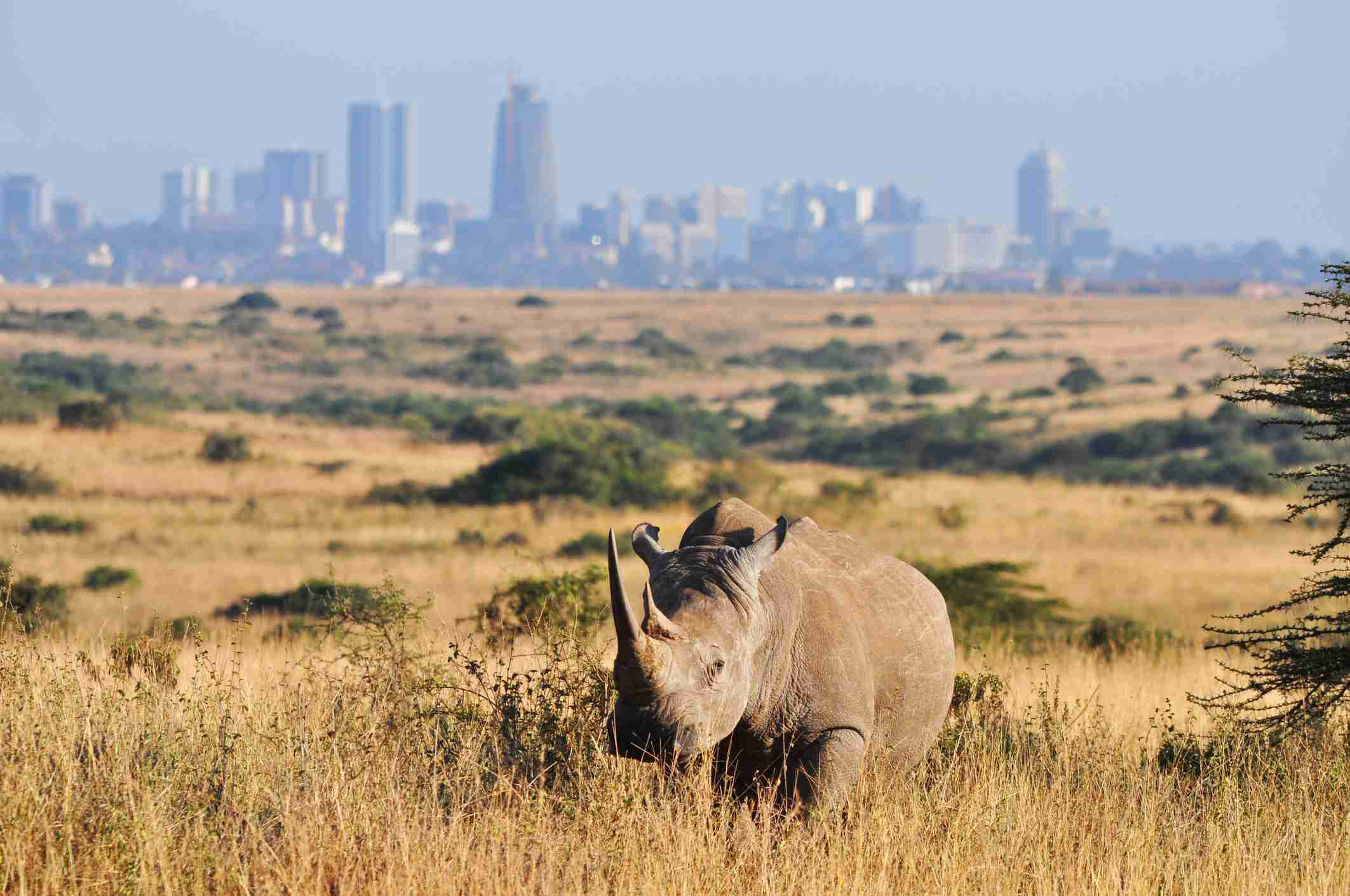Nairobi National Park: Kenya’s Urban Wilderness
Nairobi National Park, a unique gem nestled just outside Kenya’s bustling capital city, offers an extraordinary safari experience within an urban setting. Established in 1946, it is Kenya’s first national park and covers approximately 117 square kilometers. Despite its proximity to Nairobi, the park is a haven for diverse wildlife and a critical conservation area. Its unique location provides a striking contrast between the city’s skyscrapers and the expansive African savannah, making it an exceptional destination for both locals and international visitors seeking a quick escape into nature.
Wildlife Diversity: A Compact Safari Experience
Nairobi National Park is renowned for its remarkable biodiversity, offering a compact but rich safari experience. The park is home to a variety of wildlife, including the Big Four: lions, leopards, buffaloes, and rhinos. Although elephants are not present, the park compensates with an impressive array of other species. Visitors can expect to see giraffes, zebras, wildebeests, and numerous antelope species such as impalas and gazelles. The park is also a crucial refuge for the endangered black rhino, with ongoing conservation efforts aimed at protecting this iconic species. Birdwatchers will find over 400 bird species within the park, including the striking African fish eagle and the colorful lilac-breasted roller.
The Nairobi National Park Safari Experience
Despite its relatively small size, Nairobi National Park provides an engaging Africa safari experience. Game drives are the primary means of exploring the park, with a network of well-maintained roads offering access to various wildlife viewing areas. Open 4×4 vehicles are ideal for game drives, providing unobstructed views of the park’s diverse habitats. The park’s varied terrain includes grasslands, bushlands, and rocky outcrops, which contribute to its rich wildlife diversity. Morning and late afternoon are the best times for game drives, as cooler temperatures increase animal activity. The park’s proximity to Nairobi makes it a convenient option for those with limited time, providing a taste of Kenya’s wildlife without venturing far from the city.
Nairobi National Park’s Unique Features
One of Nairobi National Park’s most notable features is its juxtaposition with the urban skyline of Nairobi. The sight of giraffes and zebras grazing with the city’s skyscrapers in the background offers a surreal and memorable experience. Additionally, the park’s diverse landscapes, including the Nairobi River, provide critical habitats for wildlife and add to the park’s scenic beauty. The Nairobi River, which flows through the park, is a key water source that attracts various animals, especially during the dry season. Visitors can explore the riverbanks and observe wildlife as they come to drink and cool off.
The David Sheldrick Wildlife Trust: A Conservation Success
The David Sheldrick Wildlife Trust, located adjacent to Nairobi National Park, plays a significant role in the park’s conservation efforts. Established in 1977, the trust is renowned for its work in rescuing and rehabilitating orphaned elephants. The trust operates an orphanage where visitors can learn about the plight of elephants and support conservation efforts. Daily visits to the orphanage offer opportunities to interact with young elephants and observe their feeding and bathing routines. The trust’s efforts are crucial in the fight against poaching and habitat loss, contributing to the protection of Kenya’s wildlife heritage.
The Giraffe Centre: An Educational and Interactive Experience
Another notable attraction near Nairobi National Park is the Giraffe Centre, an educational and interactive facility dedicated to the conservation of the endangered Rothschild’s giraffe. The center offers visitors the chance to feed and interact with these gentle giants, providing a unique and hands-on learning experience. Educational programs at the center focus on giraffe conservation and the challenges facing their populations. The center’s efforts are vital in raising awareness and support for wildlife conservation, making it a valuable addition to any visit to Nairobi National Park.
Nairobi National Park and Beyond: Exploring Kenya’s Iconic Parks
Nairobi National Park serves as an excellent introduction to Kenya’s wildlife, but the country is home to numerous other iconic parks that offer diverse safari experiences. The Maasai Mara National Reserve, renowned for the Great Migration and its abundant wildlife, provides a more extensive safari experience with opportunities to see the Big Five and witness dramatic predator-prey interactions. Amboseli National Park, with its stunning views of Mount Kilimanjaro and large elephant herds, offers a unique landscape and wildlife experience. Tsavo East and West National Parks, characterized by their diverse terrains and rich biodiversity, provide expansive wilderness adventures. Each park contributes to Kenya’s rich tapestry of safari destinations, offering varied landscapes and wildlife encounters.
Conservation Challenges and Efforts
Nairobi National Park faces several conservation challenges, including habitat encroachment, human-wildlife conflict, and poaching. The park’s proximity to Nairobi means that it is subject to pressures from urban development and infrastructure projects. To address these challenges, conservation organizations and park management are actively involved in habitat restoration, anti-poaching initiatives, and community engagement programs. Collaborative efforts with local communities aim to promote sustainable practices and reduce conflicts between humans and wildlife. The park’s role in conservation extends beyond its boundaries, contributing to broader efforts to protect Kenya’s wildlife and natural heritage.
Practical Tips for Visiting Nairobi National Park
To make the most of your visit to Nairobi National Park, consider the following tips:
- Best Time to Visit: Nairobi National Park is accessible year-round, but the dry season from June to October is ideal for wildlife viewing, as animals are more concentrated around water sources.
- What to Pack: Pack lightweight, breathable clothing in neutral colors, a wide-brimmed hat, sunglasses, sunscreen, and sturdy walking shoes. Bring a camera and binoculars for wildlife observation.
- Health and Safety: Ensure you have the necessary vaccinations and malaria prophylaxis before traveling. Follow all safety guidelines provided by park rangers and guides.
- Travel Arrangements: Book your safari through a reputable operator like Winton Africa Safaris Ltd to ensure a well-organized and enjoyable experience. Consider combining your Nairobi National Park visit with other attractions in Kenya for a comprehensive adventure.
Conclusion
Nairobi National Park offers a unique and accessible safari experience, combining rich wildlife encounters with the unique backdrop of an urban skyline. From its diverse fauna and scenic landscapes to its role in conservation and education, the park provides a memorable introduction to Kenya’s natural heritage. As you explore this urban wilderness, you’ll gain an appreciation for the park’s significance and the broader conservation efforts needed to protect Kenya’s wildlife. Nairobi National Park stands as a testament to the coexistence of urban development and natural conservation, making it a must-visit destination for anyone interested in experiencing Kenya’s wildlife in a truly distinctive setting.




